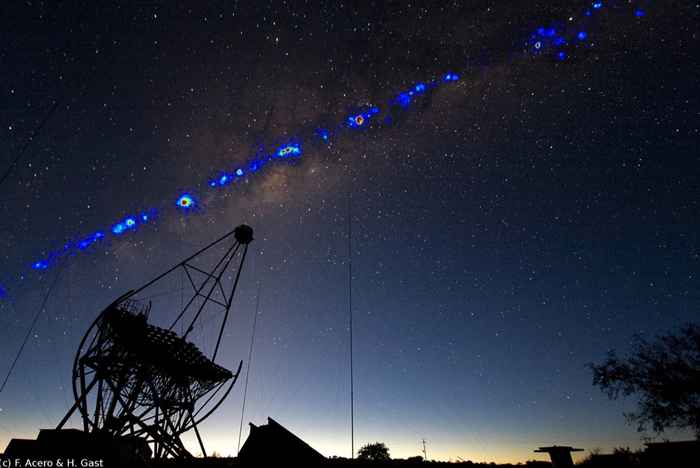Jacco Vink to use large grant to seek out the sources of gamma rays
21 May 2021
Vink will implement this project together with astronomers and physicists from the University of Amsterdam (Sera Markoff and Christoph Weniger), the University of Groningen (Manuela Vecchi and Andrey Baryshev) and the NOVA lab located at the latter.

Sources of gamma rays
The array of 50 telescopes will indirectly measure the gamma-ray photons (particles of light) that enter our atmosphere and then generate a cloud composed mainly of electrons that are moving at close to the speed of light. This causes the electrons to emit a bluish light known as Cherenkov radiation. CTA's telescopes register this nanosecond-long flashes of blue light and identify the direction in which the electron cloud is moving. In doing so, the CTA actually uses the atmosphere as a detector: the larger the portion of the atmosphere that is being looked at, the more sensitive the CTA is. And when the same flash is detected using multiple telescopes, it is possible to much more accurately determine the direction in which the electron cloud is moving. This, in turn, enables the scientists to more precisely identify the direction of the original gamma-ray photon as well. That is why they use so many telescopes.
Measuring the flash from multiple angles enables them to reconstruct the direction from which the gamma rays came and how much energy the gamma ray photon had. In this way, the location of a gamma ray source can be pinpointed to a precision of 0.1% of the lunar diameter, while images can be made with a pixel size of 10% of the lunar diameter. Known sources of gamma rays include jets created by black holes, the remnants of supernovas and neutron stars, though it might also be emitted when neutron stars merge and set off gravitational waves. Massive particles of dark matter can emit gamma rays as well. CTA hopes to shed new light on the composition of this mysterious and dark component of the universe.
European project
CTA is a European project with international partners including the United States, Japan and Australia. While Dutch astronomers have been involved in the scientific plans for CTA for some time, countries are required to contribute to the array's construction before they can participate in the CTA observation project. Thanks to the NWO Large grant, the Netherlands will now be able to make such a contribution. The Dutch project will be led from within the UvA, in close cooperation with the University of Groningen and the NOVA lab it hosts, which specialises in the development and construction of astronomical detectors via serial production.
This NOVA team will build the detectors for the 50 telescopes that are meant to enable CTA to measure extremely high-energy gamma rays between 10 and 100 tera-electronvolts (TeV). The radiation is emitted by electrons and protons that may themselves have as much as ten times more energy than the detected photons: between 100 and 1,000 TeV. By way of comparison: the LHC at CERN produces protons with energies of 6.5 TeV.
High-energy particles, such as energetic protons, are also detected on Earth, but they originate elsewhere in the Universe. These particles are known as ‘cosmic rays’ – a strange same, since they are not really a kind of radiation at all. Because these particles are deflected by cosmic magnetic fields as they move across the universe, scientists are unable to tell where they originally come from. The gamma rays they emit, however, come directly from the source. So CTA enables astronomers to see where the cosmic-ray particles are being accelerated, what the energy is these particles can be accelerate to, and how much of the total energy in these sources is contained in cosmic rays.
Predecessors of CTA are located in Namibia (H.E.S.S.) and on La Palma (MAGIC). The northern CTA array will be installed on La Palma, in the Canary Islands.
NWO Large Investment grant
NWO plans to invest a total of 20 million euros in seven projects aimed at innovative scientific infrastructure. These ‘NWO Large Investment’ funds will be used to purchase high-quality equipment, data sets and software. By doing so, NWO will strengthen the scientific infrastructure that Dutch knowledge institutions provide for the benefit of the Dutch research community.